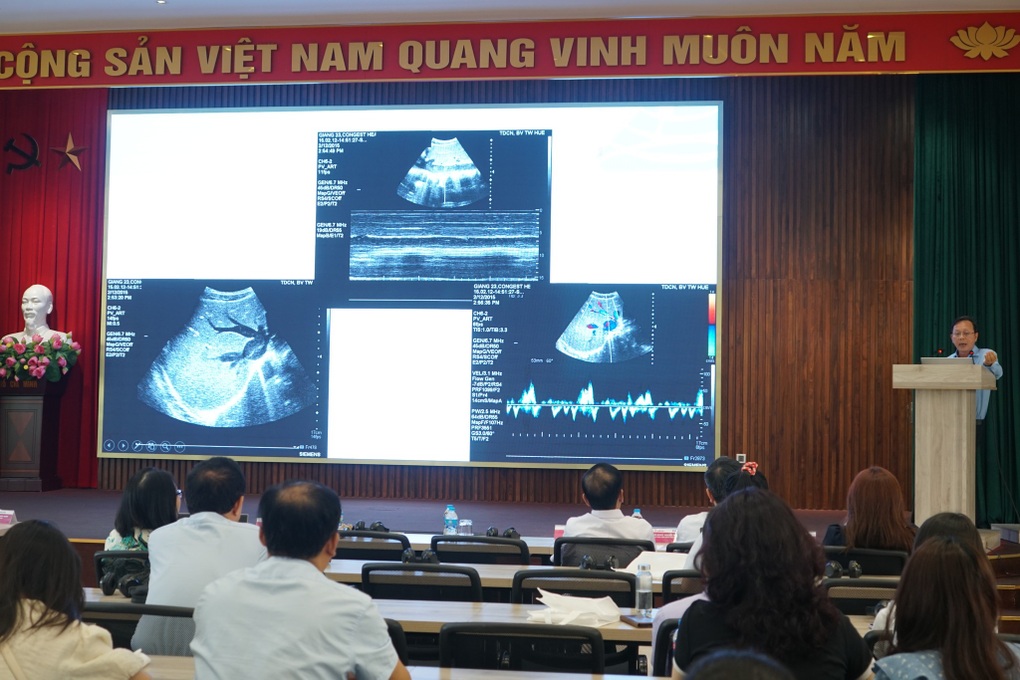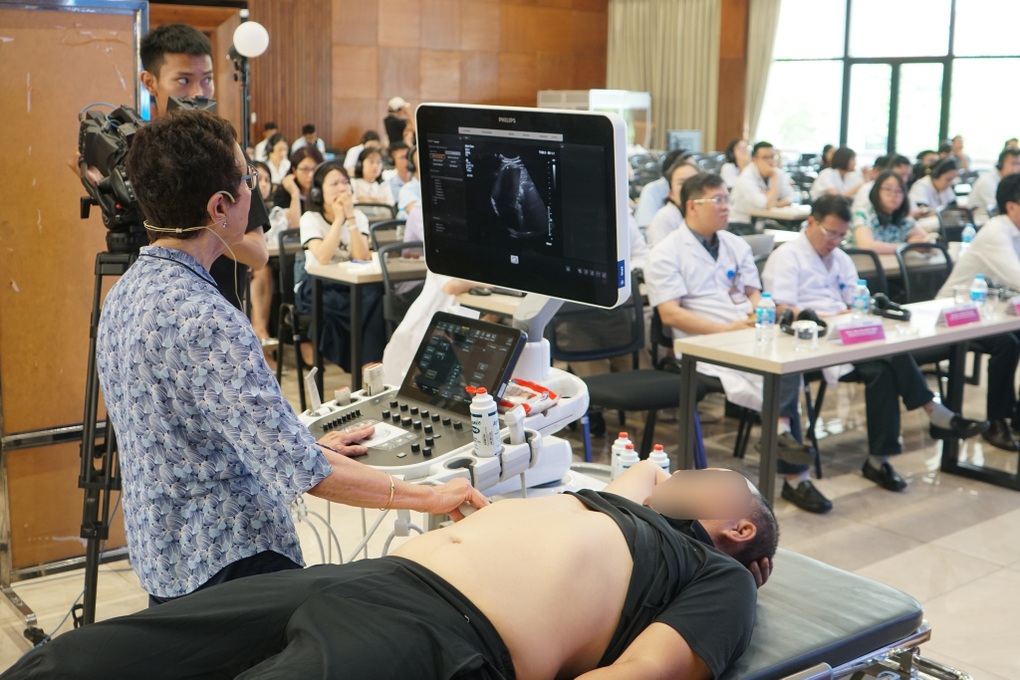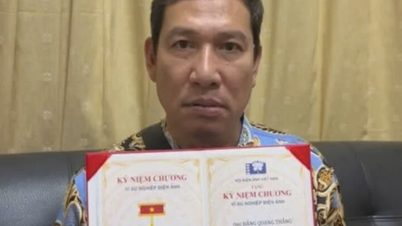Free up labor, increase treatment efficiency thanks to AI application
On June 6, at the workshop "Improving liver disease diagnosis: Optimizing efficiency and accuracy through technology and AI in ultrasound", Dr. Nguyen Cong Huu, Director of E Hospital, assessed that applying AI contributes to liberating the labor force of medical staff, bringing many benefits to patients.

Experts share about detecting liver diseases through ultrasound (Photo: Thanh Xuan).
Dr. Huu pointed out the current situation in many hospitals, where patients complain about long test and X-ray results; doctors complain about frozen screens, not being equipped with 2 screens; and then the information technology system has errors... causing interruptions in prescriptions.
Therefore, the application of digital transformation in medicine, including digital transformation in medical training activities, is very important.
"I hope to be able to apply AI technology to most of the hospital's modern equipment in the near future, to enhance the ability to respond to emergency medical situations, improve the quality of diagnosis and treatment for patients, and aim for patient satisfaction," Dr. Huu shared.
Liver ultrasound: Cheap, easy to perform in diagnosis and treatment monitoring
At the workshop, Dr. Pham Kieu Huyen Trang, Department of Diagnostic Imaging, E Hospital said that liver ultrasound is a cheap, easy-to-perform method, which is very important in diagnosing and monitoring diseases.
"Fatty liver disease, liver tumors... can all be detected by ultrasound," said Dr. Trang.
Two clinical liver disease cases shared at the workshop also showed the important significance of ultrasound in long-term patient monitoring.
The first case is a 31-year-old male patient with no history of hepatitis B or C, no history of hormonal drug use, and low alcohol consumption.
However, during a medical examination, he was found to have a liver parenchymal lesion.
The patient was diagnosed with focal nodular hyperplasia (FNH) - a benign liver parenchymal lesion, often asymptomatic and often discovered incidentally. The patient was assigned to regular follow-up to ensure patient safety.

Foreign expert demonstrates liver ultrasound to monitor long-term liver disease in patients (Photo: Thanh Xuan).
The second clinical case, a 33-year-old female patient, was diagnosed with focal nodular hyperplasia via magnetic resonance imaging 11 years ago. Since then, the patient has been regularly monitored for early detection of changes that could be dangerous to the patient.
Experts say that liver diseases are increasing due to lifestyle and eating habits... Early, accurate and appropriate diagnosis helps patients receive early treatment, preventing dangerous complications that may occur such as cirrhosis, liver cancer...
The application of AI in ultrasound technology allows doctors to diagnose early and accurately. Currently, quantitative tissue elastography ultrasound technology, using simple but highly effective ultrasound, is not only valuable for early diagnosis, but also monitors the progress of the patient's treatment process.
According to the Director of E Hospital, the seminar program with the sharing of experiences of Vietnamese and international experts, helps doctors of E Hospital and many other hospitals improve their professional qualifications, update scientific knowledge, help the diagnosis and treatment process for patients to be accurate, fast and effective.
Topics: "Improving the diagnosis of liver diseases: Optimizing efficiency and accuracy with technology and AI in ultrasound"; "Clinical cases - Liver tissue elastography"; "Assessing fatty liver by sound attenuation coefficient: Artifacts and factors affecting sound attenuation coefficient measurement results"... were presented by international experts with a lot of newly updated information.
Source: https://dantri.com.vn/suc-khoe/ung-dung-ai-giup-phat-hien-ton-thuong-gan-ngay-tu-giai-doan-dau-20250606161437378.htm





























![[Photo] Nearly 104,000 candidates in Hanoi complete procedures to take the 10th grade entrance exam](https://vphoto.vietnam.vn/thumb/1200x675/vietnam/resource/IMAGE/2025/6/7/7dbf58fd77224eb583ea5c819ebf5a4e)




























































![[OCOP REVIEW] Tu Duyen Syrup - The essence of herbs from the mountains and forests of Nhu Thanh](https://vphoto.vietnam.vn/thumb/402x226/vietnam/resource/IMAGE/2025/6/5/58ca32fce4ec44039e444fbfae7e75ec)









Comment (0)